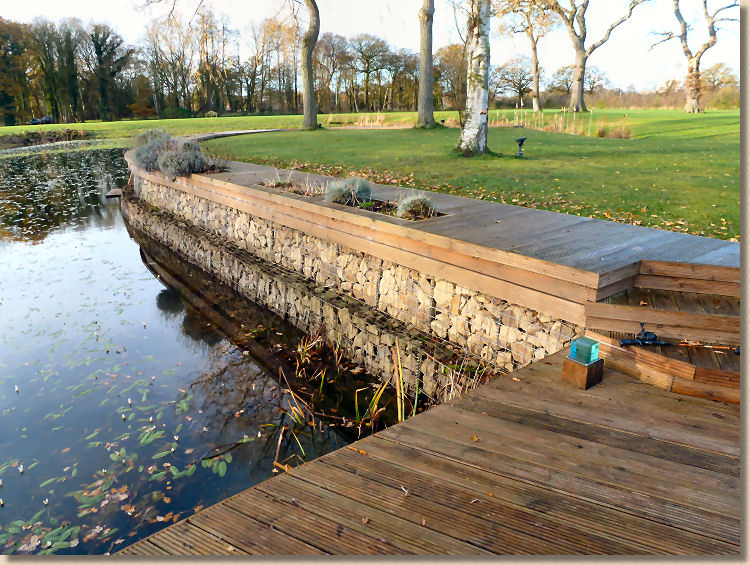Introduction:
Gabions are best thought of as large, wire baskets that are filled with a local stone or other cheap aggregate, including reclaimed and recycled materials, and then linked together to form terracing, retain river banks, support earth banks and limitless other uses in the civil engineering field.
Mattresses are a specialised form of gabion which are, unsurprisingly, mattress shaped, in that they have a relatively larger plan size and shallower depth. Their primary use is in protecting the bed of watercourses from excessive scour - they aim to prevent the water ripping up its own bed, most commonly at weirs, waterfalls and other places where there is a sudden change in water level.
Both Gabions and Mattresses are usually referred to as 'baskets' and they come in a variety of dimensions, from dinky 300x300x300mm mini gabions for decorative use in gardens to 2m x 3m x 0.5m mattresses for river bed protection. There is a range of mesh sizes to suit the various applications, and different structural formats. They are relatively cheap, at £30-£50 each and by using local random stone or recycled aggregate, generally in chunks 100-200mm, and being very simple to install, the cost is kept to a minimum, compared to masonry or reinforced concrete, and the finished result is often very aesthetically pleasing.
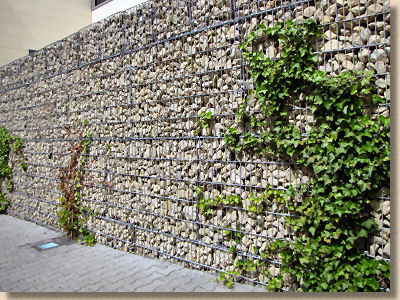
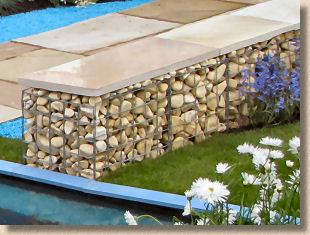
Types and Formats
The two basic types, basket and mattress, have already been discussed and these are illustrated below.
There are two common formats: twisted wire, which usually features honeycomb or hexagonal cells in the panels, and the welded mesh format which is more commonly seen as square or rectangular grid-like panels.
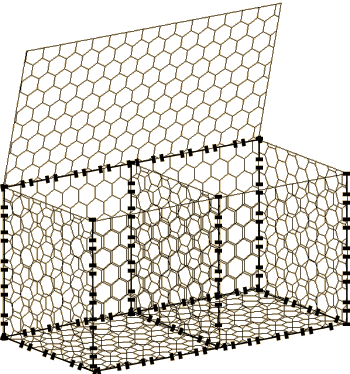
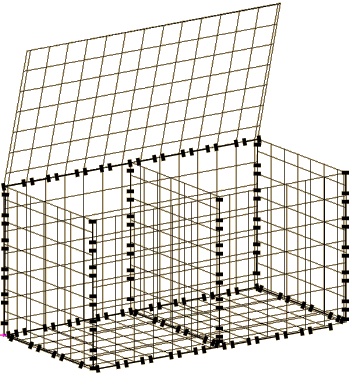
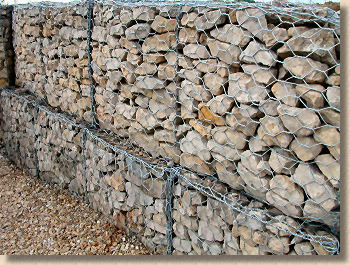
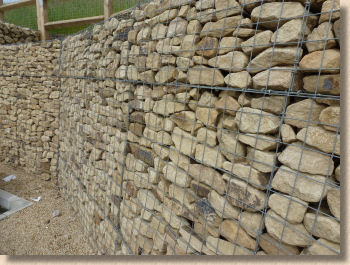
In a hugely sweeping generalisation, the twisted wire/honeycomb format often give a more organic, soft, naturalistic appearance, while the welded mesh format is more geometric, rigid and formal. Obviously, the type of fill has an impact on finished appearance, and from a distance the wire is barely visible, but the aesthetics should always be considered when designing a gabion-based structure.
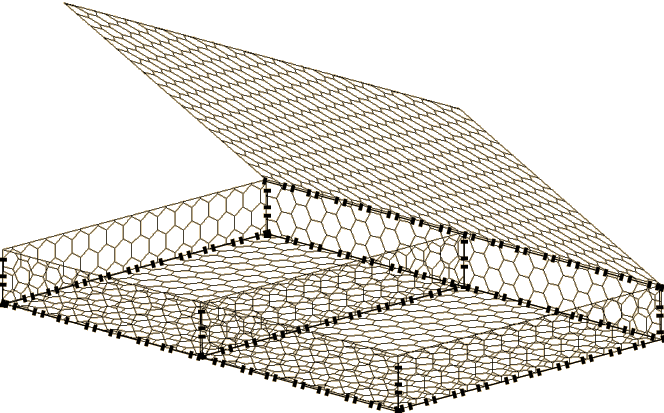
Mattresses and gabions, as mentioned, are often combined to provide protection to watercourses. Mattresses protect the bed, and so tend not to be seen, while gabions are more obvious, usually stacked vertically to shore-up or protect steep or vulnerable embankments.
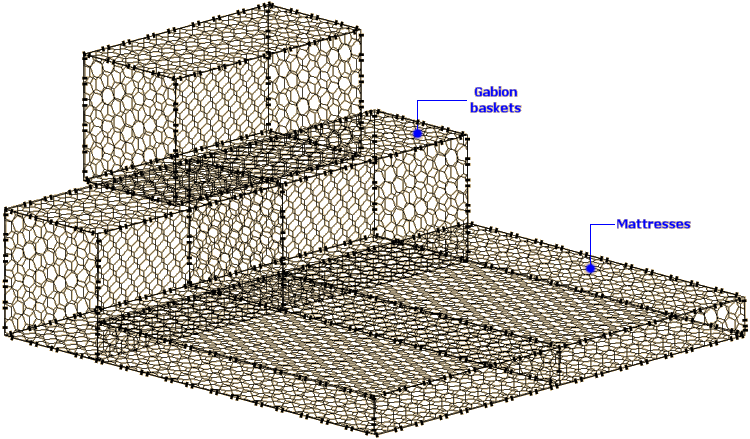
Construction
Building with gabions is very simple. There's a flat base of unbound aggregate (although concrete is sometimes used for larger projects) and then the baskets are placed, laced together with tie wire and then filled with the selected material.
It's common practice to lay a complete course of baskets, lash them together and then fill them, completing the whole course before placing subsequent courses. Adjacent baskets are always laced together; both those to either side of a particular basket as well as those beneath (if any).
Cross-wires are used as necessary to retain the essential box-shape. This involves lashing a length of tie wire to opposite faces of the basket; front-to-back and side-to-side. One or two cross-wires per face might be used - every gabion erector has their own preference based on the type of basket and the type of fill, but a typical installation would see two cross-wires front-to back at one-third and two-thirds basket height, and one cross-wire side-to-side at half basket height. As there is likely to be supporting gabions to either side, it's not thought necessary to use more than a single side-to-side restraint.
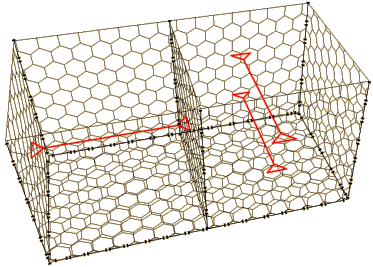
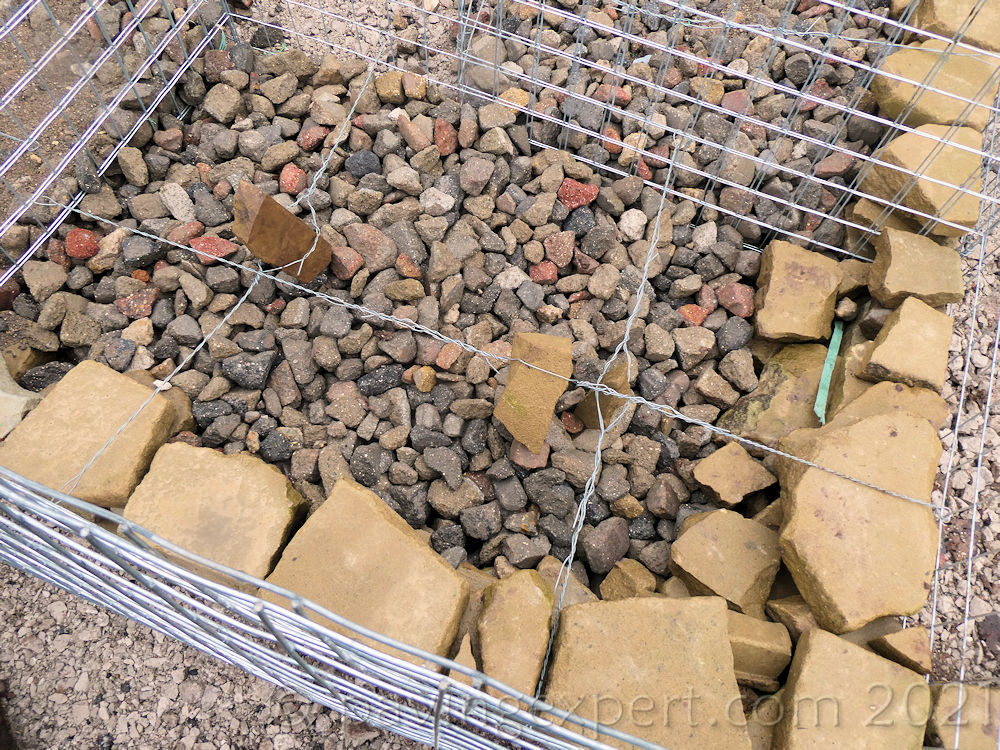
Although some installations utilise plumb vertical baskets (which are usually tied into the backfill with geo-textiles or earth anchors), most projects will realy on the gabions being laid to an angle of 5-10° from the vertical with subsequent courses stepped back by 75-150mm from the leading edge.
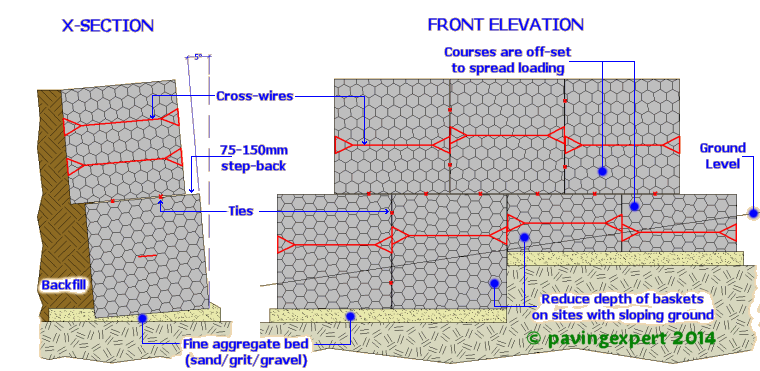
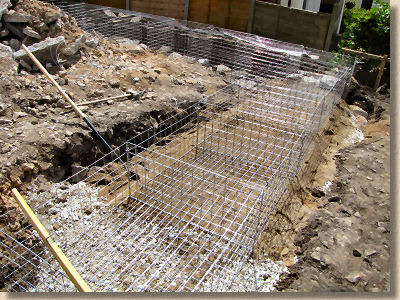
The first course (or maybe it's the only course) or baskets are laid onto a bed of fine aggregate. This may be sand or grit, but 6-10mm pea gravel is a popular choice. As long as it is a reasonable quality aggregate that's capable of being levelled accurately so that the base of the gabion is fully supported. Where the baskets are to be laid to a batter angle, that angle should be formed in the bed so that all baskets lie at the correct angle.
The baskets are placed onto the bed and checked for alignment prior to filling.
Where the natural ground of a site is sloping, the depth of gabions in this foundation course may be stepped to avoid the need to excavate too deeply. Half depth baskets (usually 500mm rather than the standard 1000mm) reduce the amount of work and materials required to form the gabion structure.
In this photie, the baskets to the left are half-depth, switching to a full-depth, 1000mm deep basket on the corner where the side elevation is deeper.
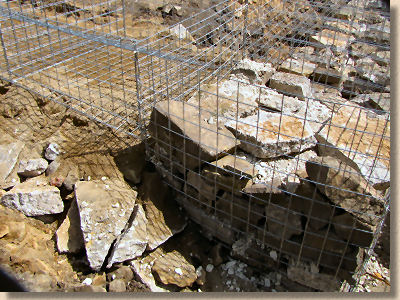
Filling
Traditionally, gabions and mattresses have been filled with a cheap and/or readily available local stone, usually random rubble, more or less randomly plonked into the baskets in any old haphazard manner. On some jobs, they're even filled by an excavator trickling stone from a huge pile into the gaping maw of each gabion, with a single operative acting as both banksman and wiring installer.
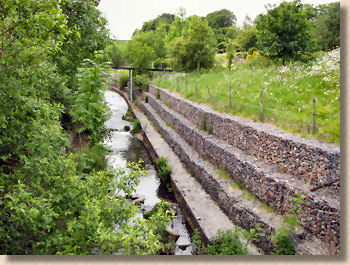
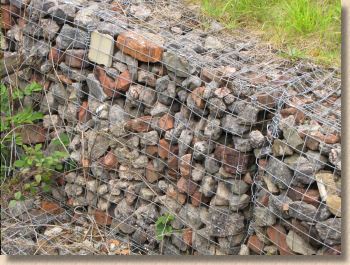
One cost-saving 'trick' is to line the outer faces of the baskets with quality, attractive, walling-quality stone, and then load up the innards with rubble which will provide stability and mass, but should never be seen!
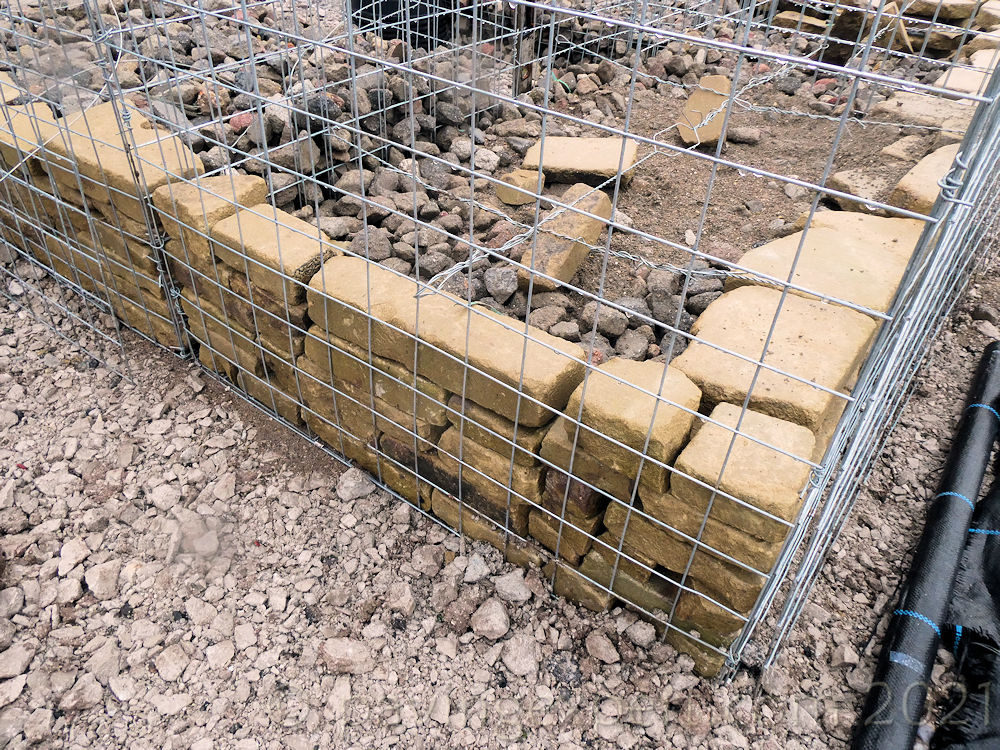
At the other extreme, there are projects where the stone has been carefully selected and individually hand-placed with unreal accuracy creating a structure that is little short of a wire-bound dry stone wall.
Just the way in which stone has been placed into the baskets can have a dramatic effect on its appearance....
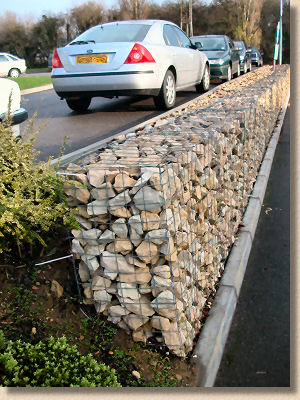
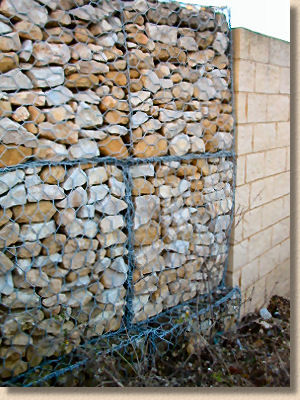
In the pair of photies above, the gabions have been filled with the same stone. On the left, a slim (500mm wide) gabion has been rough filled with Cotswold limestone, probably with the aid of an excavator or loading shovel, with the random lumps of stone landing where they lie, and creating a very open-looking structure, but one that is still strong enough to retain a 750mm high bank between the two car parks.
Meanwhile, on the right, the stone has been hand-laid, with each piece laid in its flattest plane, creating a much closer, tighter finish, more akin to traditional walling. In fact, if it wasn't for the heavy wire lacing together the individual baskets, a superficial glance might regard this structure as a free-standing dry stone wall.
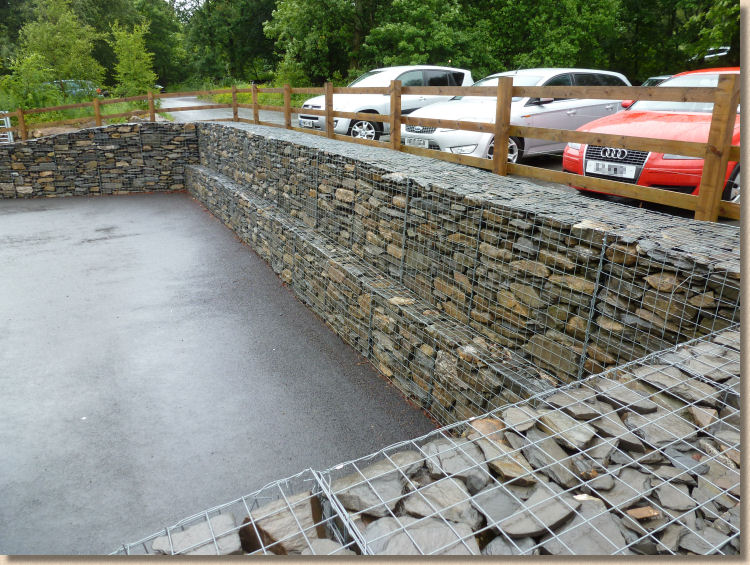
Similarly with these gabions at a car park in England's Lake District, where a local stone with a slate-like tendency to split into flattish pieces has been used to fill retaining gabions. Random filling would not work well with such stone a some pieces would end up lying vertically, teetering on an edge and creating an unstable fill, whereas simple hand-filling results in a layered, stable fill which is not only structurally sound, but is aesthetically pleasing.
However, careful, calculated hand-filling to present a tight finish is not restricted to tabular stone: the same technique can be used with random, irregular lumps of stone....
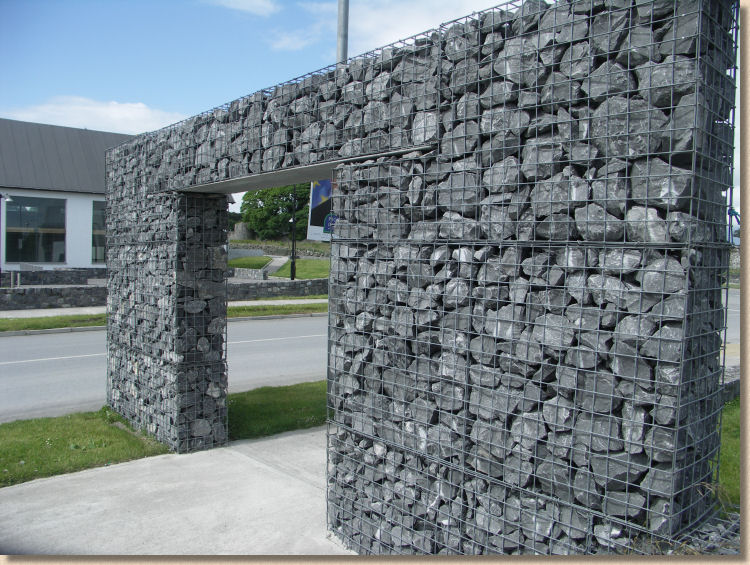
...and stone doesn't come in shapes much more irregular than Ballinasloe Irish Limestone, but with a little perseverance and patience, it is possible to get that tight, "packed full" look which conveys reliability and solidity in a relatively narrow structure.
However, when it comes to carefully placed, layered fill, it's hard to beat this example from a designer garden at the RHS Show at Tatton some years ago, where mini-gabions, roughly 450x450mm in plan, have been filled with cut-to-size Indian sandstone flags stacked to fill the basket.
It does beg the question regarding just what function is provided by the gabion in such a feature?
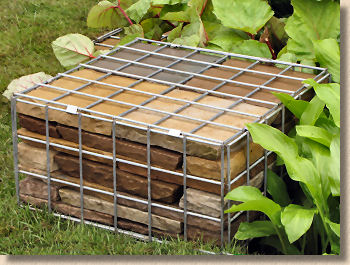
In fact, fancy garden design does seem to be a rich vein for finding decorative fillings for gabions....
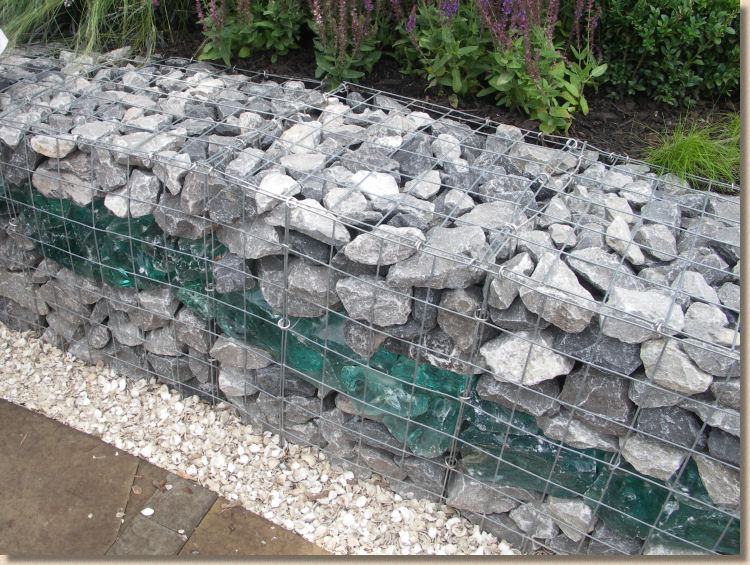
The examples above might have used rubble and rock and glass in pretty unusual ways, but at least the baskets are filled with something solid. You can always rely on a garden designer to turn an idea on its head, and fill a wire cage with something....errr....less substantial!
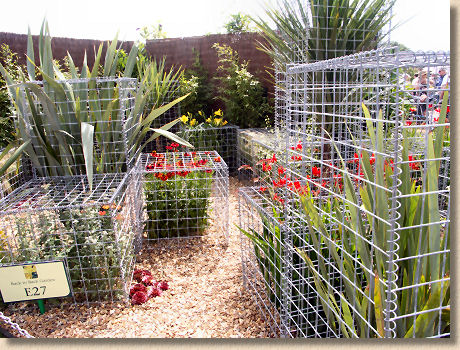
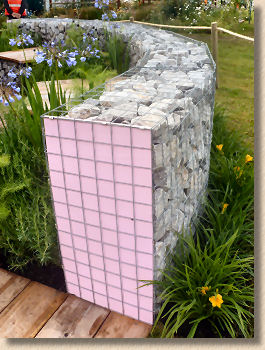
And why restrict ourselves to straight lines? With a little bit of imagination and careful trimming, it's quite possible to create a gently curving wall.
But when you want something more definitely circular....
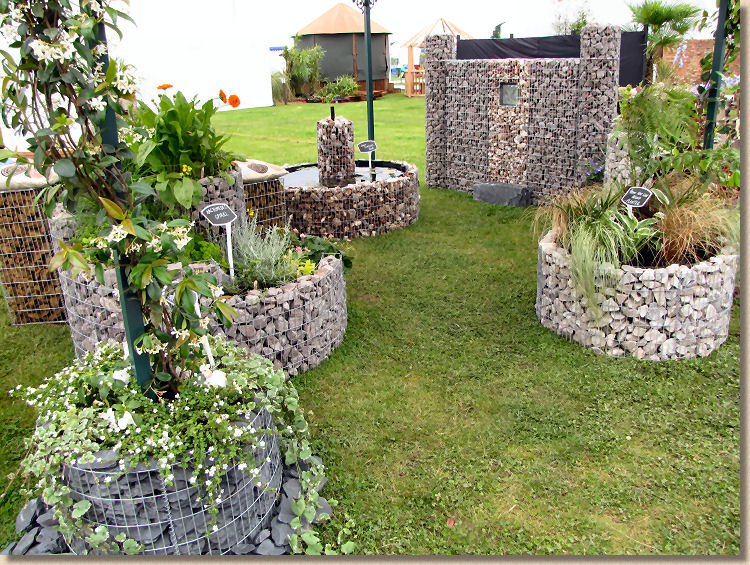
And some of the more adventurous designers get so carried away with the possibilities offered by gabions, they build entire gardens from them!
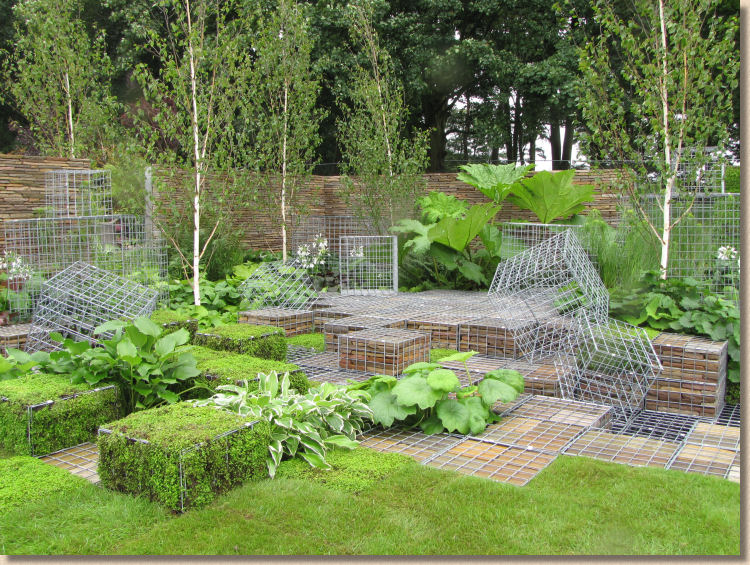
So, whether they are filled to be decorative statement pieces or loaded with any old rubble, gabions are an incredibly valuable and ridiculously under-used option for vertical challenges when creating a hard landscape.
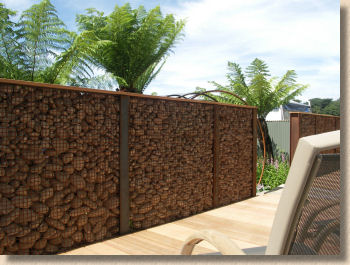
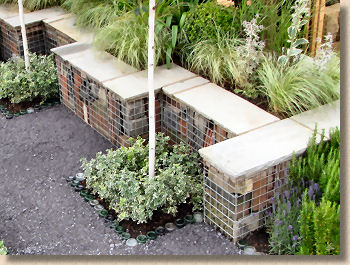
But however they are used, there is something glorious about using gabions for embankments against slow moving water or larger garden ponds....
